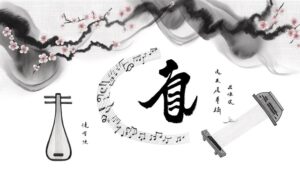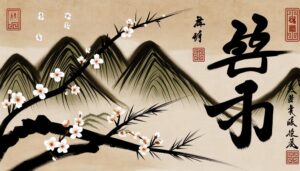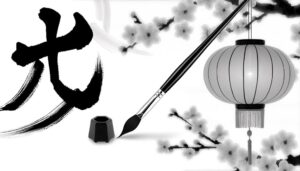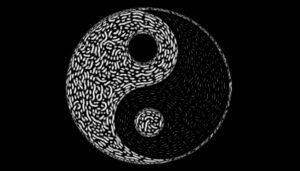What Does the Chinese Year of the Rat Symbolize?
The Chinese symbol for the Year of the Rat originates from ancient Chinese mythology and was formalized during the Han Dynasty (206 BC–220 AD). This zodiac sign, earned through the Jade Emperor's race, symbolizes cleverness, adaptability, and resourcefulness.
Historically, rats were considered harbingers of prosperity and renewal, influencing agriculture, astrology, and traditional literature like the I Ching. Celebrated with rituals and festivals during Chinese New Year, the Rat's symbolic attributes have permeated art, from Ming dynasty ceramics to modern digital media.
These nuances weave a rich tapestry of cultural heritage, offering further insights into its layered significance.
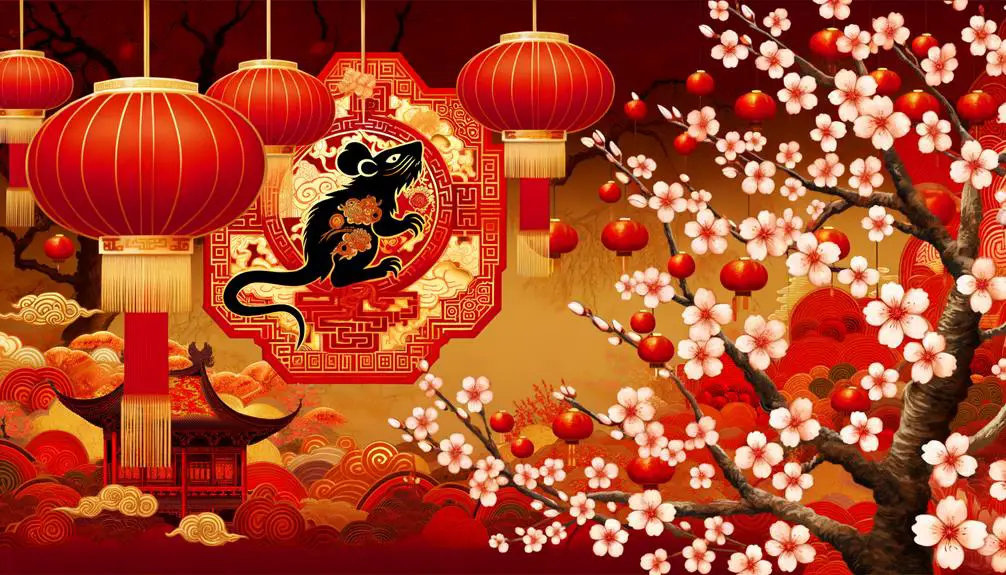
Key Takeaways
- The Year of the Rat symbolizes cleverness, adaptability, and resourcefulness in Chinese culture.
- Rooted in ancient mythology, the Rat's position was formalized during the Han Dynasty.
- Celebrated as a harbinger of prosperity and renewal during Chinese New Year.
- Influences Chinese art, including paintings, ceramics, and textiles with symbolic attributes.
- Modern interpretations blend traditional symbolism with contemporary aesthetics and eco-friendly materials.
Historical Origins
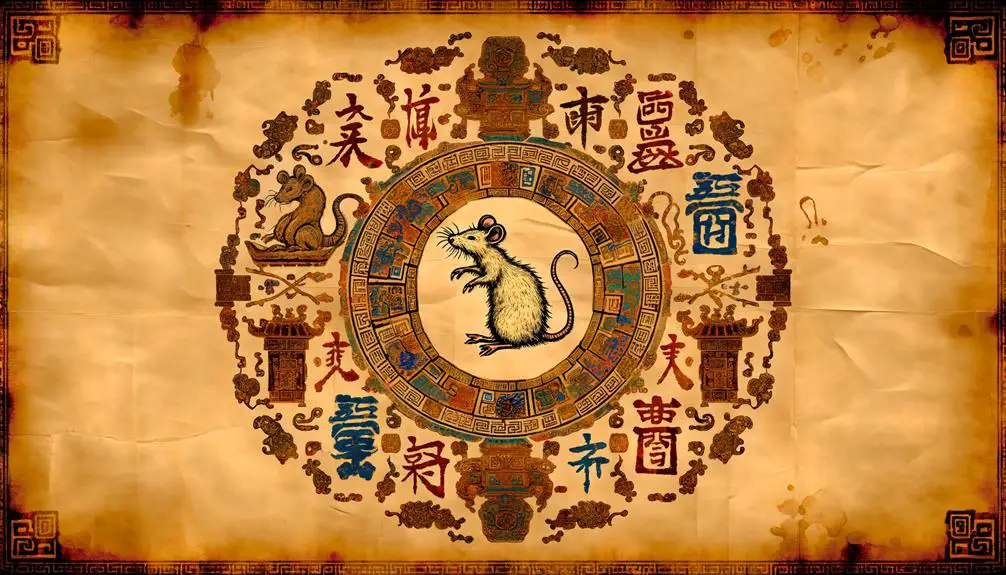
Historically, the Year of the Rat can be traced back to ancient Chinese mythology and the development of the Chinese zodiac system, which dates back over two millennia.
The origins are rooted in the Han Dynasty (206 BC–220 AD), where the twelve-animal zodiac cycle was formalized.
The Rat, being the first animal in this cycle, gained its position through the mythological Jade Emperor's race, in which the Rat's cleverness and resourcefulness led it to outsmart other animals.
This chronological framework was not merely a calendar system but a cultural touchstone influencing various facets of life, including agriculture, astrology, and social customs.
Ancient texts like the 'Shiji' (Records of the Grand Historian) provide historical context, underscoring its enduring legacy.
Symbolic Meanings
Building on its historical origins, the Year of the Rat carries rich symbolic meanings that permeate various aspects of Chinese culture and philosophy.
Traditionally associated with cleverness, adaptability, and resourcefulness, the Rat is celebrated as a harbinger of prosperity and renewal.
Historical texts, such as the I Ching, emphasize the Rat's ability to thrive in diverse environments, suggesting a profound understanding of survival and success.
In Chinese mythology, the Rat's role in the Great Race, which determined the zodiac order, highlights its strategic thinking and quick wit.
These symbolic attributes are intricately woven into the cultural fabric, influencing celebrations, rituals, and even business practices, where the Rat's traits are viewed as essential elements for achieving fortune and growth.
Personality Traits
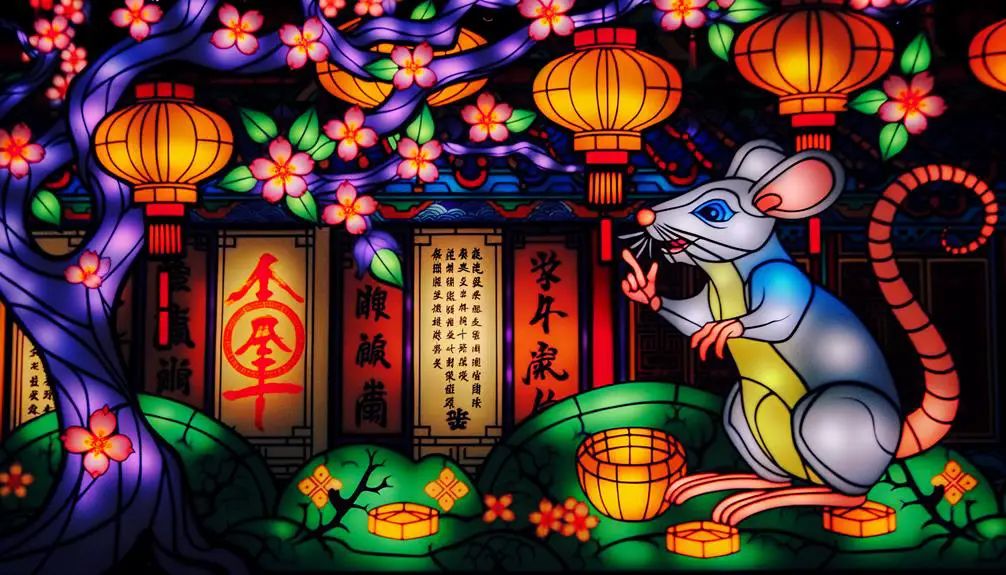
Delving into the personality traits associated with the Year of the Rat, one finds a complex tapestry of characteristics such as ingenuity, adaptability, and an innate strategic mindset, deeply rooted in historical narratives and cultural beliefs.
Traditionally, these traits are seen as reflections of the rat's survival instincts and resourcefulness. Historical texts often portray rats as clever problem solvers, effortlessly maneuvering intricate mazes. This adaptability translates into a keen ability to seize opportunities, a trait highly valued in agrarian societies where resourcefulness could mean the difference between prosperity and famine.
Additionally, the strategic acumen associated with the Year of the Rat is celebrated in Chinese folklore, where rats often outwit larger, more powerful animals, symbolizing the triumph of intellect over brute strength.
Cultural Celebrations
The rich tapestry of personality traits attributed to the Year of the Rat finds vibrant expression in the myriad cultural celebrations that honor this astute and resourceful animal in Chinese tradition. Rooted in ancient folklore, the Chinese New Year, or Spring Festival, prominently features the Rat, symbolizing new beginnings and industriousness.
Elaborate parades, traditional lion dances, and intricate lantern displays are emblematic of the Rat's cleverness and adaptability. Historically, families perform rituals such as offering food to deities and ancestors, invoking the Rat's qualities of prosperity and protection. These festivities not only celebrate the Rat's virtues but also reinforce communal bonds and cultural continuity, reflecting the profound reverence for this zodiac symbol in Chinese heritage.
Influence on Art
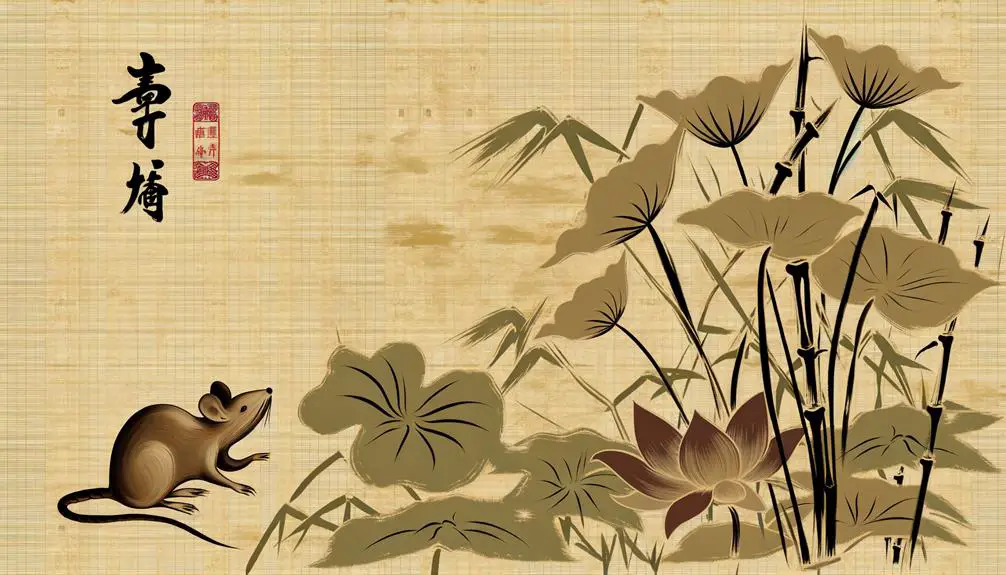
Throughout centuries, the Year of the Rat has profoundly influenced Chinese art, manifesting in diverse forms such as intricate paintings, delicate ceramics, and elaborate textiles.
Historically, the rat's symbolic attributes of intelligence and resourcefulness have been meticulously depicted in various artistic mediums. Ming dynasty ceramics often featured rat motifs to symbolize wealth and fertility.
Similarly, traditional Chinese paintings from the Tang and Song dynasties frequently included the rat, showcasing its agility and cleverness. In textile art, the rat appears in elaborate embroidery, signifying prosperity and adaptability.
These artistic representations not only highlight the rat's esteemed position in Chinese culture but also reflect broader societal values and philosophies, making the Year of the Rat a rich source of artistic inspiration.
Modern Interpretations
In contemporary art and design, the Year of the Rat continues to inspire innovative interpretations, blending traditional symbolism with modern aesthetics to reflect current societal values and technological advancements.
Artists incorporate digital mediums and interactive installations, juxtaposing ancient motifs of resourcefulness and intelligence with cutting-edge technology. For instance, virtual reality exhibits might depict the rat's adaptability in urban landscapes, emphasizing sustainability.
Historical references to the rat's significance in Chinese folklore are reimagined through minimalist design, resonating with today's emphasis on simplicity and efficiency.
Additionally, fashion designers use eco-friendly materials to symbolize the rat's ingenuity in maneuvering environmental challenges. Such interpretations provide a nuanced understanding, bridging historical reverence with contemporary relevance.
Conclusion
The Year of the Rat, deeply rooted in ancient Chinese zodiac traditions, symbolizes intelligence and adaptability, much like a small yet agile creature weaving through a dense forest. Historically revered and culturally celebrated, its influence extends to art, literature, and modern interpretations, painting a vivid tapestry of continuity and change.
This enduring symbol encapsulates a multifaceted legacy, reflecting the intricate interplay between tradition and contemporary cultural expressions, akin to threads woven into a rich, enduring fabric of history.


